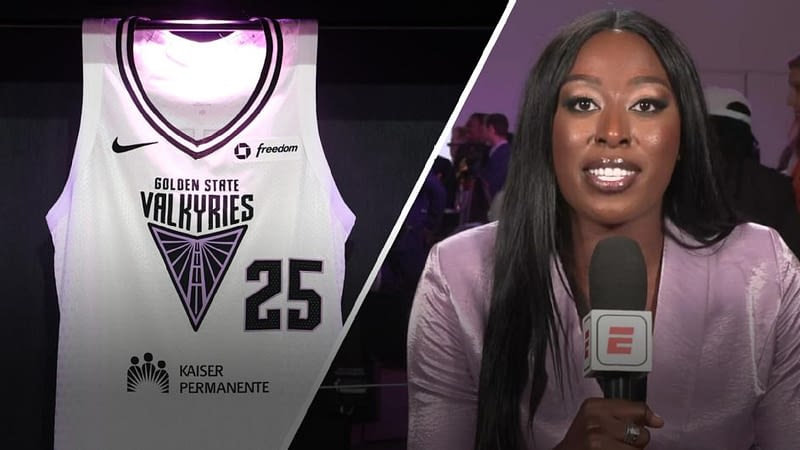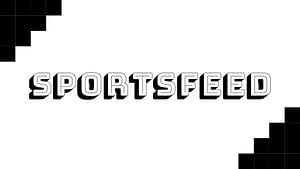What to Expect in WNBA Free Agency
As we dive into the new year, the WNBA free agency is poised to be a thrilling spectacle, albeit with a twist. Over the past two years, we’ve witnessed unprecedented player movement, but this year, the trade market might just steal the spotlight. Several top-tier free agents, including Breanna Stewart of the New York Liberty, Alyssa Thomas of the Connecticut Sun, Kelsey Plum of the Las Vegas Aces, Satou Sabally of the Dallas Wings, and Kelsey Mitchell of the Indiana Fever, are eligible for the core designation. This means they could only switch teams via trade, adding a layer of intrigue to the proceedings.
Adding to the drama is Jewell Loyd‘s request for a trade from the Seattle Storm. The market is ripe for blockbuster deals as teams gear up for 2026, when nearly all of the WNBA’s star players have the chance to become free agents and capitalize on an anticipated salary cap increase.
While we might not witness a seismic shift like Stewart’s move from the Storm to New York in 2023, free agency could still play a pivotal role in the title race. Last year, the Minnesota Lynx made under-the-radar moves by signing starters Alanna Smith and Courtney Williams, who helped the Lynx push the Liberty to the limit in the WNBA Finals.
Keep an eye on unrestricted free agents who could amplify star talent in a similar fashion, including Wings forward Natasha Howard, the Aces’ duo of Alysha Clark and Tiffany Hayes, and the Storm’s Gabby Williams. — Pelton
Unrivaled’s Inaugural Season
Mark your calendars for January 17, when Unrivaled tips off in Miami, ushering in a new era for women’s basketball. This 3×3 league, founded by WNBA stars Breanna Stewart and Napheesa Collier, offers players a domestic alternative to playing overseas during the WNBA offseason. While not the first offseason option in the U.S., the caliber of players and the compensation they receive set this league apart.
Unrivaled boasts 36 women across six teams, all earning six-figure salaries and equity in their respective teams. Notable players include Sabrina Ionescu, Angel Reese, Brittney Griner, and Chelsea Gray, with Cameron Brink committed for next year.
Unrivaled has attracted significant investments from sports figures like NBA star Giannis Antetokounmpo, gold medalist Michael Phelps, South Carolina women’s basketball coach Dawn Staley, and USC star JuJu Watkins. The league has also secured a multiyear partnership with Turner, which will broadcast the games.
The games, played on Fridays, Saturdays, and Mondays over two months, will take place on a 70- by 50-foot compacted full court. The season features a round-robin schedule, with the top four teams advancing to the playoffs. — Andrews
Expansion and the Launch of the Golden State Valkyries
For the first time since the Atlanta Dream in 2008, the WNBA will debut a new expansion team this spring: the Golden State Valkyries. Led by GM Ohemaa Nyanin and head coach Natalie Nakase, the Valkyries began building their inaugural roster with an expansion draft last month. Their 11 selections included seven international players, WNBA veterans Monique Billings and Kayla Thornton, and second-year fan-favorite Kate Martin.
Don’t be surprised if Golden State makes bold moves in free agency this month. Owner Joe Lacob has set a lofty goal for the Valkyries: win a championship within five years. To achieve this, the organization must attract top talent, and ownership investment is evident with the Valkyries playing at Chase Center and training at the Warriors’ former practice facility in Oakland.
The Valkyries, part of the Western Conference, will host their inaugural game on May 16 against the Los Angeles Sparks. The league will remain at 13 teams until 2026, when the Toronto Tempo and Portland WNBA team both launch. An expansion draft for those franchises is expected later this year, with expectations for a 16th franchise by 2028. — Philippou
Seven New WNBA Coaches Will Impact the League
This offseason, the WNBA presents perhaps the most eclectic group of new coaches, representing a wide array of backgrounds. Stephanie White, returning to the Indiana Fever, is the most experienced WNBA coach in a new position this year. She previously led the franchise from 2015-2016, then spent five years coaching women’s college basketball at Vanderbilt and two with the Connecticut Sun. None of the other hires this offseason have been head coaches in the WNBA before.
Karl Smesko left Florida Gulf Coast for Atlanta, and Lynne Roberts left Utah for Los Angeles. Other coaches have moved from college to the WNBA, but the timing for these two — after they already had started their college seasons — stood out. The job security and pay for many college coaches have long been considered barriers for WNBA teams trying to lure them. But the pro game has become more appealing than it once was, as the college game — with the advent of NIL and the transfer portal — has become more challenging for some.
Golden State’s Natalie Nakase, the Chicago Sky’s Tyler Marsh, and the Dallas Wings’ Chris Koclanes: All were successful WNBA assistant coaches. Nakase and Marsh won two titles in Las Vegas with head coach Becky Hammon. Koclanes was an assistant to Curt Miller at Connecticut and Los Angeles, and now will work in Dallas for Miller, who is general manager of the Wings. Koclanes shares something in common with Smesko and Roberts: He was most recently a USC women’s assistant and left the Trojans midseason.
Connecticut’s Rachid Meziane: This is his first job in the United States, and the first time a European coach has been hired to take over a WNBA team. Former Chicago coach James Wade is an American who also had French citizenship and mostly coached in Europe before coming to the WNBA. Emre Vatansever, from Turkey, filled in on an interim basis when Wade left the Sky during the 2023 season to go to the NBA’s Raptors. But Meziane is a French native, a longtime pro coach in France, and has guided the Belgian women’s national team. He is from a pool that previously has not been tapped into.
The Washington Mystics’ Sydney Johnson: The Mystics hired Johnson and their new GM (former WNBA player Jamila Wideman) at the same time, rather than bring the GM aboard to help with the coach hiring. Johnson spent last season as a WNBA assistant with Chicago and has also coached USA Basketball 3×3 teams. But the bulk of his coaching experience is in the men’s college game, including eight years as head coach at Fairfield and four at Princeton. — Voepel
WNBA Schedule and Playoff Changes
The WNBA is expanding its regular season to 44 games in 2025, up from 40 the past two seasons. Despite the increase, the transition to full-time charter travel last year has actually made the schedule less onerous for players. This year, there is no major international event (the Olympics or FIBA Women’s World Cup) to accommodate. It remains to be seen how a 44-game schedule will work when one of those events comes into play.
The league is also expanding its playoff format, with the WNBA Finals moving from a best-of-five to a best-of-seven series. The new series will have a 2-2-1-1-1 structure; the higher seed would host Games 1, 2, 5, and 7, while its opponent would host Games 3, 4, and 6.
The format of the best-of-three first round is also changing, guaranteeing all teams a home game. The new 1-1-1 schedule changes from the most recent setup, where the first two games were played at the home of the higher seed. The new setup involves more travel but gives each team some reward for making the postseason. — Voepel
League, Players Work Toward New CBA
Shortly after the WNBA Finals concluded, the WNBPA announced what most around the game expected: The union opted out of its current collective bargaining agreement two years early. The deal was set to expire in 2027 but will now only remain in effect through 2025.
The current CBA was considered a huge step in the right direction for the league and players when it was signed in January 2020. But that was before this era of unprecedented growth for the WNBA and women’s basketball, highlighted last season by historic attendance numbers, TV ratings, and a new $2.2 billion media deal.
What might the next CBA have in store? “Whenever negotiations are next, it’s not groundbreaking or landmark that we’re aiming for,” WNBPA executive director Terri Jackson told ESPN this summer. “We’re aiming for transformational.” In their opt-out announcement, the players specifically referenced fighting for an equity-based “business model that reflects their true value, encompassing higher salaries, enhanced professional working conditions, expanded health benefits, and crucial investments needed for long-term growth.”
The league and PA announced in December they met for “preliminary conversations” and had a “constructive dialogue.” Both sides will aim to come to an agreement sometime this year, well before the 2026 campaign gears up. But sources told ESPN’s Chiney Ogwumike in October that players are prepared to negotiate for as long as it takes, even if it necessitates a work stoppage. — Philippou
Originally Written by: ESPN.com





















